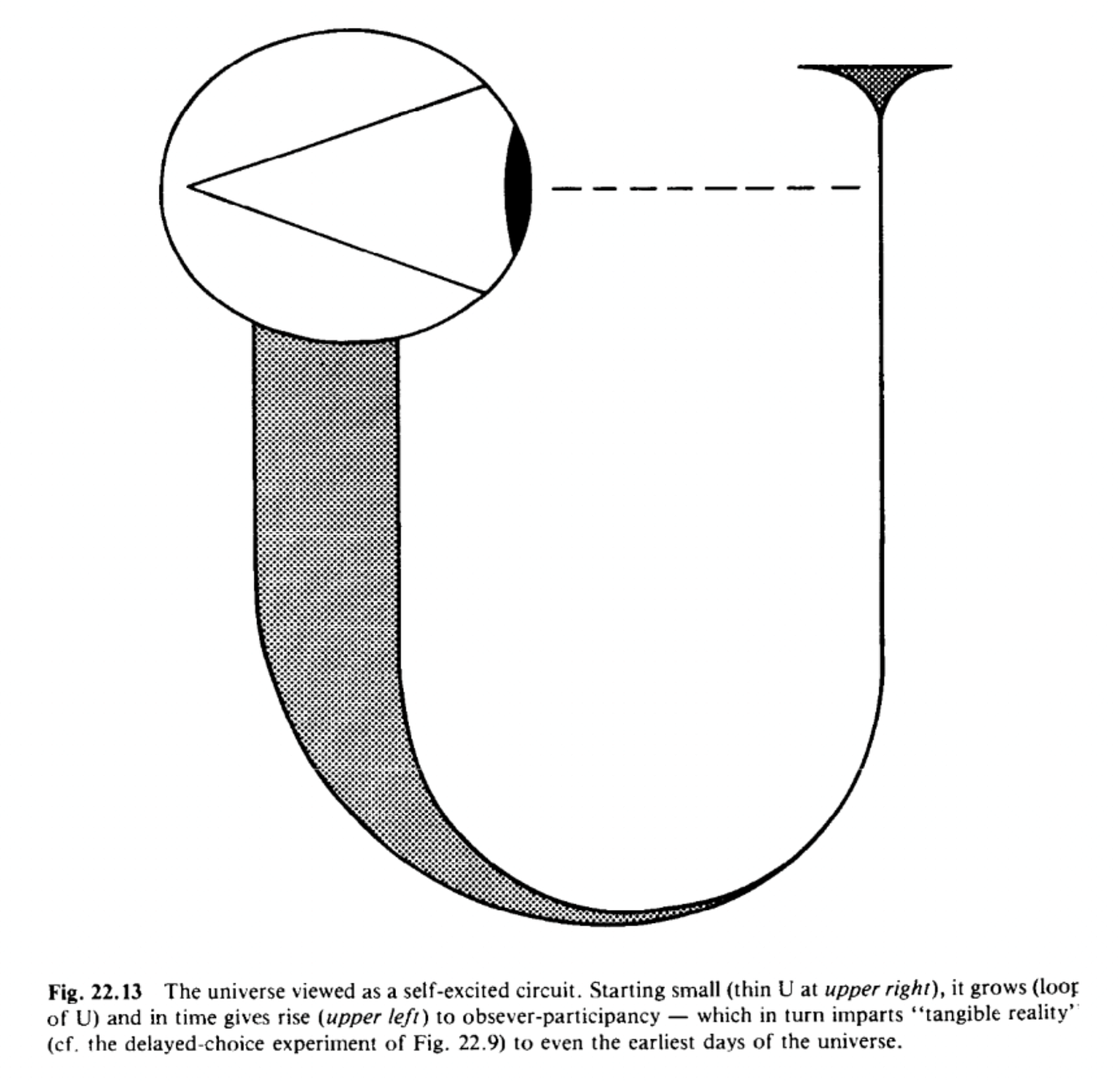
From John Wheeler (1983), Law Without Law. In: Quantum theory and measurement.
The act of observation generates the collapse of the wave function as described by the Copenhagen interpretation of Quantum Mechanics, the physics of the very small, an Alice in Wonderland view of the universe writ large when seen under the guise of exquisitely designed experiments showing how this aspect of reality rings true. What's interesting is the fact the act of observation is often anthropomorphized and not viewed as a core element of how existence functions as everything's entangled and decohered outside of the realm of humanity, thus enabling us rubes to see a consistent view of existence save for the extraordinary experiments conducted by physicists obsessed with how reality works at deep level.
Wheeler's insightful notion of existence being an information construct makes sense as the boson, (the photon), the carrier force of the electromagnetic, becomes digital by transitioning into discrete energy packets (quanta) when absorbed by leptons (the electron), a radical solution to the black body problem described in detail by Max Planck in 1900, thus introducing Quantum Mechanics to the world, the prime driver giving rise to the digital age in which we all live. Prior to absorption, photons, aka light, exist as analog waves, something readily seen by Thomas Young's brilliant 1801 double slit experiment.
Light as a wave, Thomas Young - 1801
In the final decades of his life, the question that intrigued Wheeler most was: “Are life and mind irrelevant to the structure of the universe, or are they central to it?” He suggested that the nature of reality was revealed by the bizarre laws of quantum mechanics. According to the quantum theory, before the observation is made, a subatomic particle exists in several states, called a superposition (or, as Wheeler called it, a 'smoky dragon'). Once the particle is observed, it instantaneously collapses into a single position.
From wave to bit applies, does it not?
Wheeler: It from bit. Otherwise put, every it—every particle, every field of force, even the space-time continuum itself—derives its function, its meaning, its very existence entirely—even if in some contexts indirectly—from the apparatus-elicited answers to yes-or-no questions, binary choices, bits. It from bit symbolizes the idea that every item of the physical world has at bottom—at a very deep bottom, in most instances—an immaterial source and explanation; that which we call reality arises in the last analysis from the posing of yes-no questions and the registering of equipment-evoked responses; in short, that all things physical are information-theoretic in origin and that this is a participatory universe.[85]
Independent from the human equation regarding observation works for me. :)
John Archibald Wheeler
The ultraviolet catastrophe is the error at short wavelengths in the Rayleigh–Jeans law (depicted as "classical theory" in the graph) for the energy emitted by an ideal black body. The error, much more pronounced for short wavelengths, is the difference between the black curve (as classically predicted by the Rayleigh–Jeans law) and the blue curve (the measured curve as predicted by Planck's law).




No comments:
Post a Comment